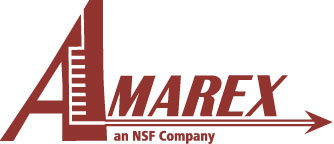- Home
- News and Resources
- Resources
- CMS Reimbursement Coverage in Wound Care: Adapt or Be Left Behind
CMS Reimbursement Coverage in Wound Care: Adapt or Be Left Behind
Update:
CMS’s Local Coverage Determination (LCD) L36377 for wound care products, including Human Cells, Tissues, and Cellular and Tissue-Based Products (HCT/Ps), is now officially enforced. The final LCD notice period began on November 14, 2024, with the LCD slated to take effect starting February 12, 2025. This update underscores the critical need for comprehensive clinical data to secure reimbursement eligibility, eliminating any margin for uncertainty.
Amarex, with expertise honed from over 100 wound care trials and a dedicated team of specialized professionals, is well-prepared to assist companies in this space. Our integrated approach enables companies to not only validate product efficacy but also navigate the streamlined path to achieving reimbursement coverage. With CMS’s criteria tightening, Amarex offers the essential guidance and support to help companies meet the high standards now required for reimbursement, ensuring a strategic advantage in this dynamic market landscape.
For more information, please contact us.
Key Takeaways from SAWC Fall 2024
After attending the Symposium of Advanced Wound Care (SAWC) in Las Vegas last week, it’s become increasingly clear that CMS reimbursement requirements for Human Cells, Tissues, and Cellular and Tissue-Based Products (HCT/Ps) are not going anywhere. In fact, these regulations are gaining traction and presenting some non-negotiable challenges that companies are going to have to deal with sooner rather than later. Here are some key takeaways that we got from our recent attendance at SAWC.
The Misconception: Is CMS Reimbursement Really Going Away?
Earlier this year, there was a wave of optimism within the industry that CMS’s Local Coverage Determination (LCD) for wound care products might be retracted or delayed. Many believed that the initial burden of proving product efficacy and justifying costs was a temporary hurdle, soon to be removed. This is no longer the case, and the general sentiment at SAWC confirmed it.
From numerous conversations we had at the event, it’s clear the reimbursement landscape is here to stay. Companies will not have the option to bypass these requirements; instead, they must embrace the challenge of demonstrating the efficacy, safety, and cost-effectiveness of their products. It’s evidently clear that the days of unchecked usage and billing practices, especially regarding amniotic membrane applications, are over. Clinical effectiveness is not the only thing under scrutiny. It may extend to where companies that cannot adequately support their product claims or justify their reimbursement requests, may be subjected to even great examination.
Prove It or Lose It: Clinical Trials Are the New Standard
A consistent theme throughout the conference was this: either invest in the necessary clinical trials, or risk the future of your business. The reality is that companies relying on Medicare reimbursement can no longer hope that the regulations will simply vanish. For some, the cost of clinical trials may seem burdensome, but the alternative—shutting down operations due to lack of reimbursement—is far worse.
There’s no escaping this reality. The CMS LCD, designed to enforce product efficacy through clinical trials, is being finalized, and companies must comply. Moving forward, manufacturers will need to show concrete data on product performance to justify the costs charged to CMS.
The Emerging Landscape
Another intriguing point from the conference was how many companies are now seeking cost-effective solutions for small-budget trials, targeting projects with 50-100 subjects. They need companies that offer end-to-end services, including patient recruitment, data collection, and reporting—and at highly competitive prices.
At the same stage, price is only one factor to consider. While some companies may begin to try to undercut on price, it’s key to evaluate the entire business model of a potential solution. A comprehensive evaluation should also consider the value, expertise, guidance, and comprehensive regulatory support that a company who offers a solution can provide.
The Path Forward: Embrace Compliance or Step Aside
The consensus from SAWC is undeniable: CMS reimbursement requirements are becoming the new norm, and they are not fading away. For companies looking to thrive, the next steps are clear. Invest in clinical trials, demonstrate product efficacy, and comply with CMS standards—or face the consequences. The message for wound care companies is blunt but vital: Adapt now, or risk everything.
At Amarex, we are ready to help companies navigate these changes. With our clinical trial expertise, deep understanding of the regulatory landscape, and ability to help clients secure reimbursement coverage, we are poised to assist those who need to embrace this new era in wound care.
Let’s talk about how we can help you secure your future in this evolving market.
Author: Dr. Kush Dody
Dr. Kush Dhody serves as the President of Amarex Clinical Research, an NSF company, committed to expediting patient access to safe and effective clinical products. With a Doctor of Medicine (M.D. equivalent) degree from the University of Pune, India, and a Master of Science in Clinical Research from Cranfield University, UK, Dr. Dhody brings over two decades of experience in clinical practice and medical research to his leadership role. Read full bio
